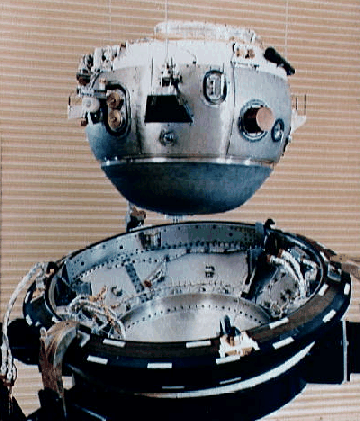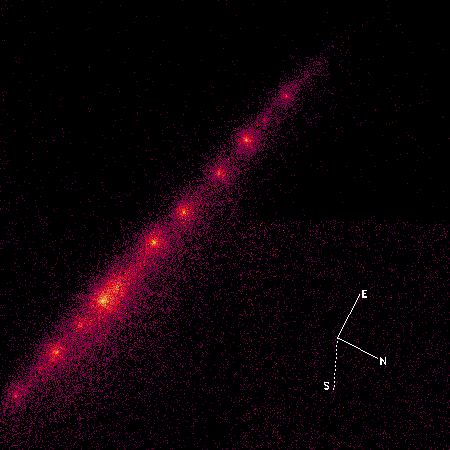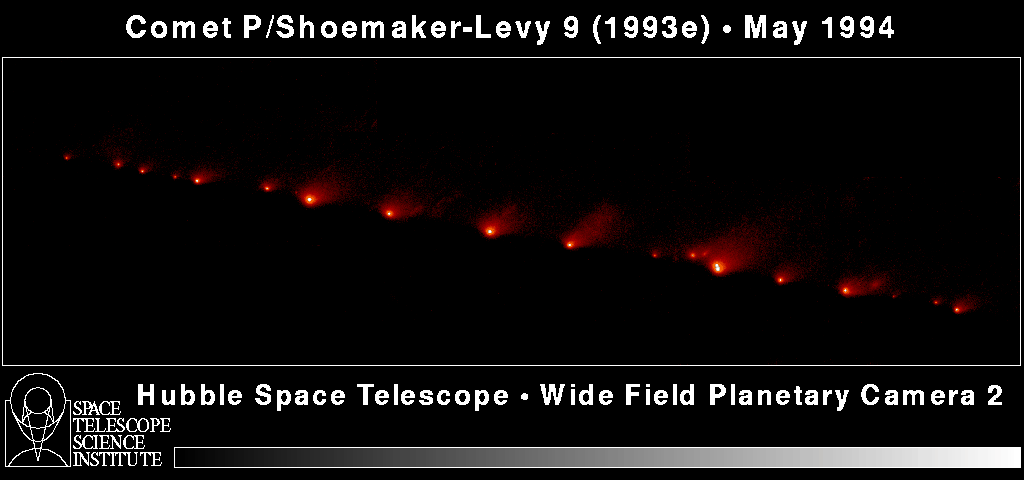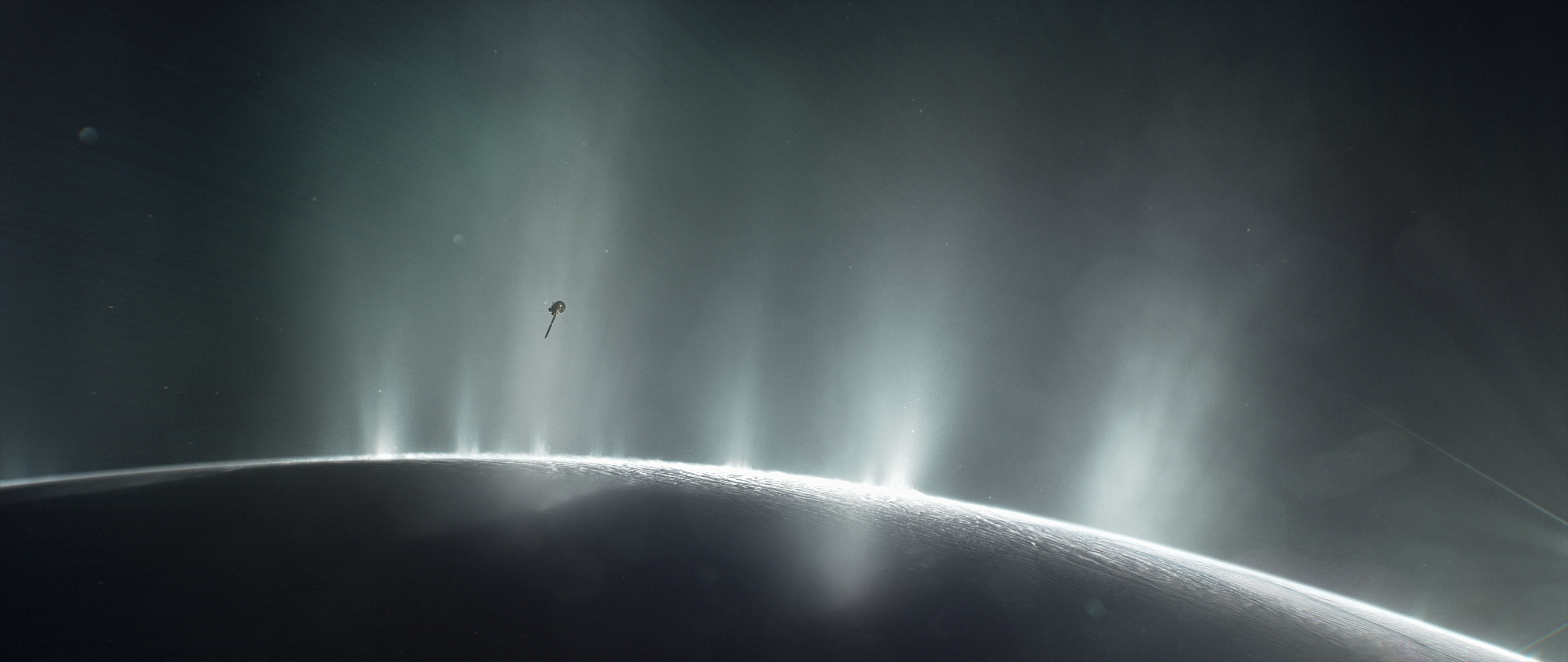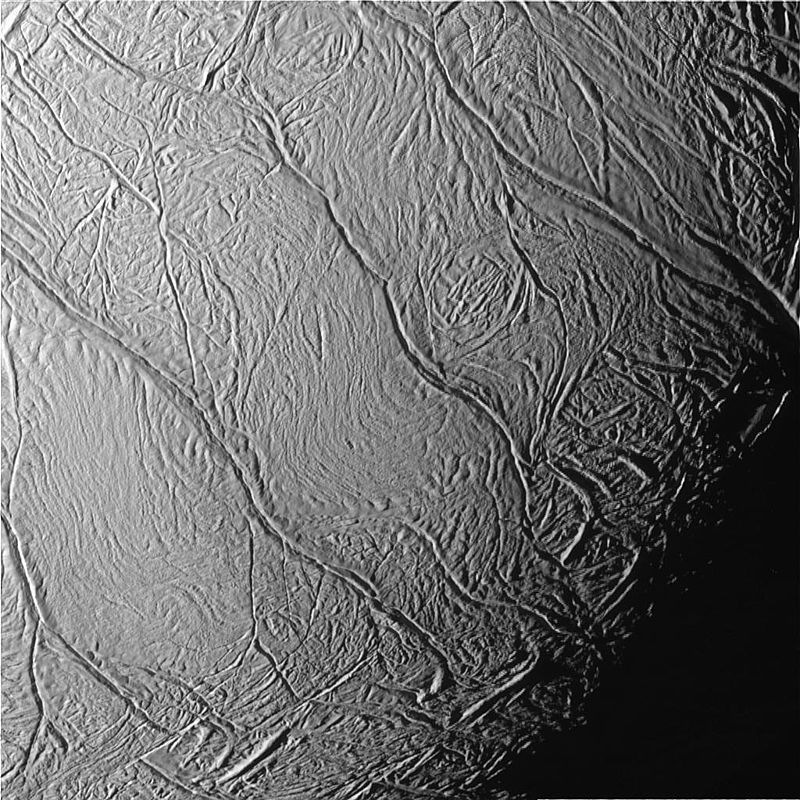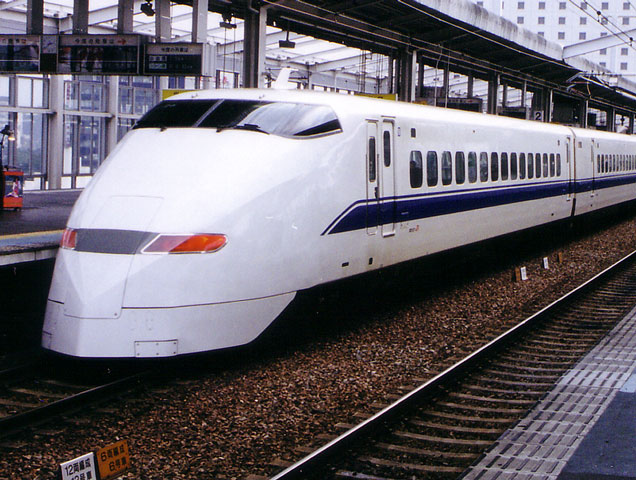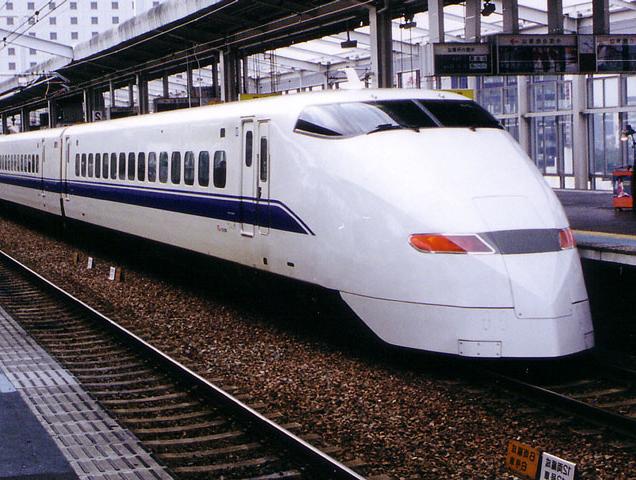Cassini to Saturn and its Moons
Cassini, launched in 1997 arrivied at Saturn in 2004, was scheduled for
decommission in September 2010, but was
reprieved in the 2011 NASA budget proposal
which allocated $60 million per year for seven years
to keep the probe pumping out science from the ringed planet
(hooray!). The end came for Cassini when it made its final
approach to Saturn on September 15, 2017 and accomplished its last
Saturn mission as it plunged into Saturn's atmosphere with
last contact on September 15 at 7:55:46 a.m. EDT.
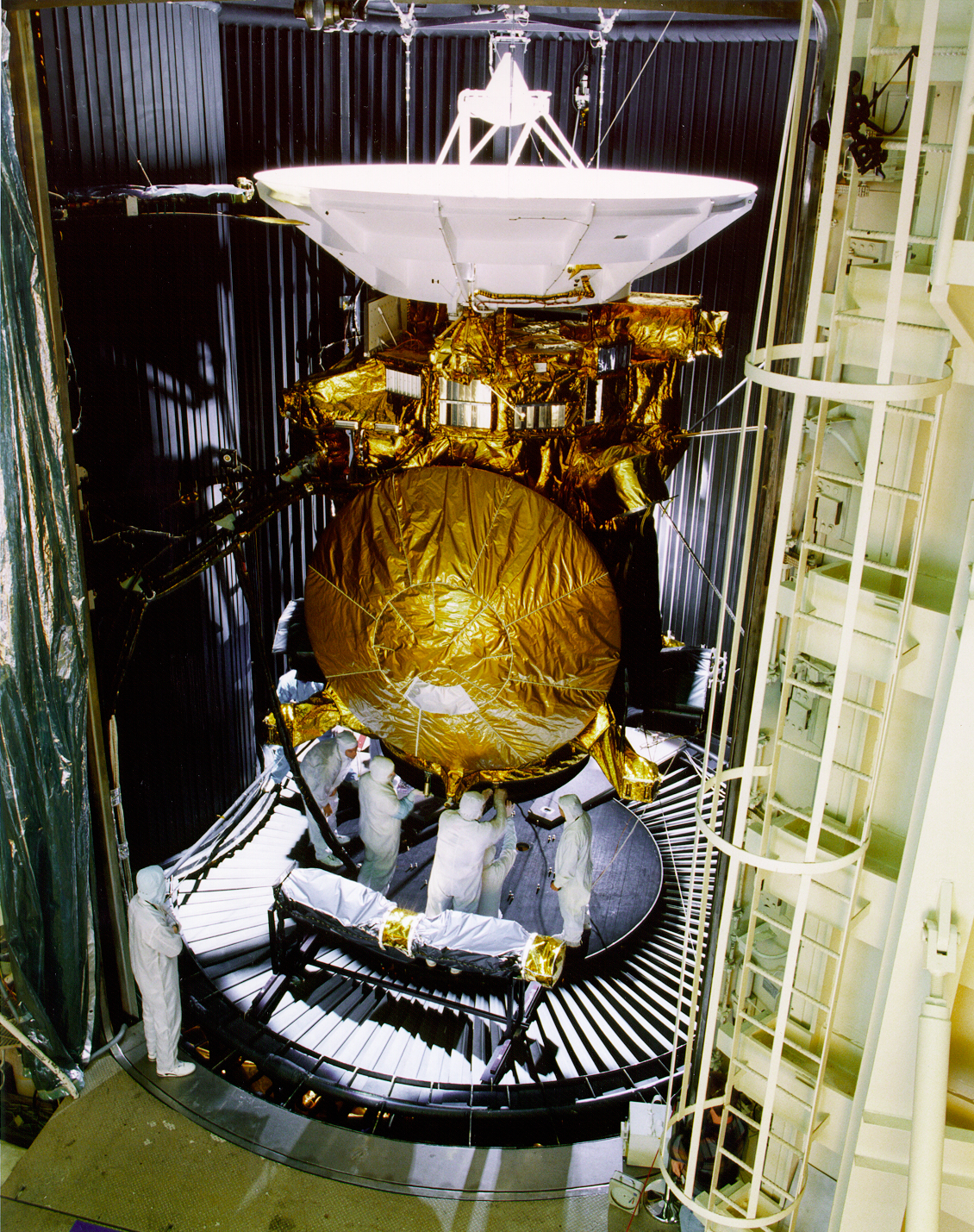
|

The above shows the small moon Tethys slipping behind the large moon Titan.
Cassini has always shown great interest in Titan, the giant, haze-enshrouded
moon of Saturn. Cassini studied the
structure and complex organic chemistry of Titan's smog-filled
atmosphere. Cassini revealed vast methane lakes and widespread stretches
of wind-driven hydrocarbon sand dunes on Titan's surface.
Cassini researchers also deduced
the presence of an internal, liquid water-ammonia ocean.
As Cassini continues to study Titan, it
will search for signs of
seasonal changes such as storms, flooding, or changes in
lake levels, as well as evidence of volcanic activity.
|


